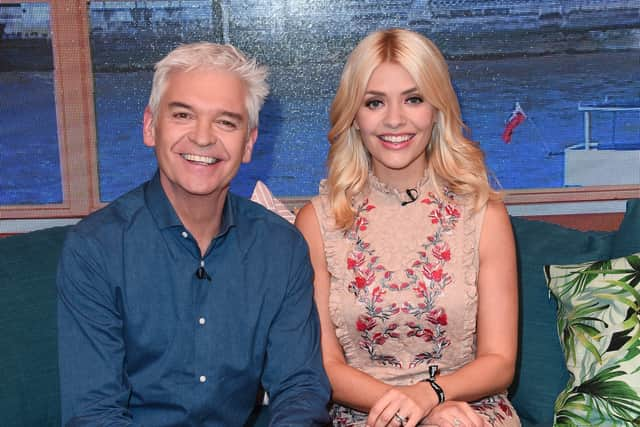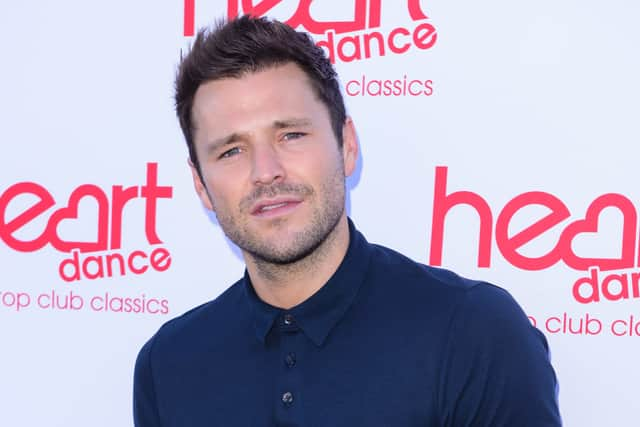ITV’s This Morning: Mark Wright struggles to hold back tears as he recounts trying to use CPR to save a stranger
and live on Freeview channel 276
Mark Wright broke down on ITV’s This Morning as he discussed the moment he had to perform CPR (Cardiopulmonary resuscitation) on a fellow holiday maker.
The former TOWIE star, 35, from Essex, explained to Phillip Schofield and Holly Willoughby that he “did what I could” in an attempt to save the life of a stranger who had collapsed.
Advertisement
Hide AdAdvertisement
Hide AdHe told how a week before going on holiday with wife Michelle Keegan, he had filmed a video to raise awareness and to learn how to do CPR in a campaign led by his friend Charlie Edinburgh - son of footballer Justin Edinburgh who died of cardiac arrest at the age of 50.
Shortly after landing at their holiday destination Charlie sent the video to Mark for him to watch.


Mark recounted that he and Michelle were checking into their hotel, when they saw a woman in distress because her husband had collapsed and was asking for help.
Discussing the day, Mark said nobody was reacting to “this poor ladies cries” and so he told his wife that he had to go and help because the CPR video was fresh is his mind and he had the confidence to do it.
Advertisement
Hide AdAdvertisement
Hide AdMark said that he had learnt a bit in school, while adding: “How it’s not in the school curriculum I do not know.”
Holly responded: “sadly in this situation the chap passed away and devastating for him and his family, however it did buy you time and his daughter thanked you for that”.
A visibly emotional Mark put his head down and tucked his sock into his trainer as he pulled himself together, saying: “I did what I could but he was there for a while before I got there”.
The former reality TV star then apologised as he fought back tears.
Advertisement
Hide AdAdvertisement
Hide AdHolly consoled him and explained that Phil had been in a similar situation with his own father. The TV presenter explained that he brought his father back from being “dead on the carpet” and thankfully after heart surgery went on to live another 30 years.


Mark explained that the man was taken away in an ambulance on a life support machine but later died after giving the family a chance to say goodbye.
This Morning resident Dr Zoe Williams explained the difference between a cardiac arrest and a heart attack and the signs to look out for.
She said: “Cardiac arrest is when the heart stops beating. There’s an electrical circuit in the heart, if that goes wrong the heart stops beating. If the heart stops beating suddenly, no oxygen is gets to the brain and somebody just collapses.
Advertisement
Hide AdAdvertisement
Hide Ad“A heart attack is different. A heart attack is when the heart muscle isn’t getting enough oxygen usually because one of the coronary arteries that supplies the heart muscle is blocked by a clot, so in that instance people tend to get pain or other symptoms that may lead to a cardiac arrest , that might lead to the heart not working properly and the heart stopping because the electrical function goes wrong.
“But they are different, If someone collapses in front of your eyes and doesn’t seem to be breathing, you’ve got to call 999 and do CPR.”
Mark shared the video on how to do CPR with his 1.8 million Instagram followers and the daughter of the man he performed CPR left a heartfelt comment: “It was my Dad who had the cardiac arrest in Tenerife. I want to thank you again for your help and support, without it my mum wouldn’t have had the opportunity to say her goodbyes to Dad.
“You are an absolute star and I’m so grateful you were there, you did your best and I’ll forever be grateful to you. Sending love, Victoria”.
Advertisement
Hide AdAdvertisement
Hide AdMany viewers praised Mark for raising awareness of the importance of learning CPR. One wrote: The importance of CPR is doing chest compressions to ironic songs like Stayin’ Alive and Another One Bites the Dust”
Another commented: “People don’t understand how important defibrillators are. One of the most important pieces of equipment and they aren’t as accessible as they should be.”
A third shared their own experience: “At 48 years old I had a cardiac arrest back in October 21. Luckily for me a retired fireman and some off duty nurses were on hand to administer CPR for 40 minutes until a portable defib shocked me twice and got me back. I was extremely lucky”


London World spoke to Kayla Shepherd, who teaches CPR at Safety Mode for her advice on how to perform CPR.
Advertisement
Hide AdAdvertisement
Hide AdKayla said: “A really useful and easy way to remember what to do when performing CPR the acronym DR’s ABC.”
Follow these steps -
D - Check for any DANGER to you, the casualty or anyone around and put gloves on if you have them available.
R - Check to see if the casualty RESPONDING, by calling their name if you know them if not say ‘Hello, can you hear me? Introduce yourself and check for movement. If you have gloves on you could squeeze their hand to try and get a response (as they may be able to hear you but not be able to respond at that time.
‘s - SHOUT for help, even if you think you are by yourself having someone else to help you would be such a great and time saving resource.
Advertisement
Hide AdAdvertisement
Hide AdA - Check their AIRWAY for obstructions (do not try and sweep anything in their mouth out) open AIRWAY gently, one hand on forehead and other hand, 2 finger chin lift.
B - Check for normal BREATHING for no longer than 10 seconds, look, listen and feel - look for chest rise and fall, listen and feel for breathing on your ear.
C - If the casualty is not breathing, CALL 999 and commence and CPR straight away
Adult CPR - 30 chest compressions (2 hands) 2 breaths (if willing and able to)
Advertisement
Hide AdAdvertisement
Hide AdChild CPR - 5 rescue breaths 30 chest compressions (one hand) 2 breaths, then repeat 30 compressions and 2 breaths
Baby - 5 rescue breaths 30 chest compressions (2 fingers) 2 breaths, then repeat 30 compressions and 2 breaths.
Comment Guidelines
National World encourages reader discussion on our stories. User feedback, insights and back-and-forth exchanges add a rich layer of context to reporting. Please review our Community Guidelines before commenting.
